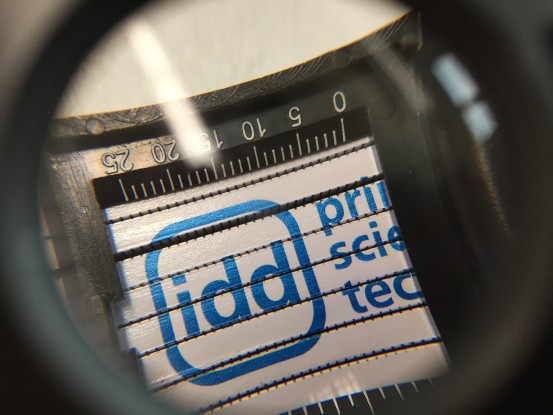(Source: start page CRC 1194)
Recommended external content
We have selected external content from YouTube for you and would like to show it to you right here. To do this, you must reveal it with one click. You can hide the external content at any time with another click.
I agree to external content from YouTube being shown to me. This may result in personal data being transmitted to third-party platforms. You can find more information in our Privacy Policy.
IDD's research aim within project C01:
The aim of printing is fast, efficient, and fine-structured wetting of technical surfaces – paper, polymer foil, textiles, metal, glass – with a liquid medium. This could be graphical printing inks, dispersions of color pigments. Increasingly, printing is concerned with “functional” matter, with nano dispersions of metals or oxides, and with polymer solutions.
We investigate the hydrodynamics of the transfer process of simple as well as of complex fluids, and we focus on the very moment of contact of the gravure cylinder surface with the substrate. This also includes transport and relaxation phenomena of the free liquid surface in the short instant that follow the moment of contact between solid body, liquid and gas phase. The dynamics of the sensitive free liquid-gas interface and of the wetting line determines the technical quality of printing. And it determines the printer’s added value to the product. This has ever been the key insight in graphical industries. It is even more important, and challenging, in future applications of functional printing. A rapidly increasing variety of new materials demands for adequate, advancing printing process solutions. Optical anti-reflection layers, organic and polymeric semiconductors for upcoming energy creation, lighting, display and communication technologies may serve as examples here.
It is our aim to make the transport phenomena in the critical instant of printing visible to the eye, and perceivable to mind. We strive for identifying, and for an understanding of processes that take place within few tens of µm, and within a millisecond. We want to compare this with the dynamics of free liquid surfaces of steam generation in a heated boiler, at the fuel injection nozzle inside of an air plane engine, and in the imbibition of liquids in a granular or porous medium or polymer network.
For this purpose we employ most recent developments of printing industries such as laser engraved or etched printing sleeve technologies, high-precision machine drives and positioning systems, and high-speed inline inspection camera systems. We are looking for those limits to gravure printing that are imposed by nothing less than the laws of physics themselves.
>> Follow Link to CRC 1194 <<



